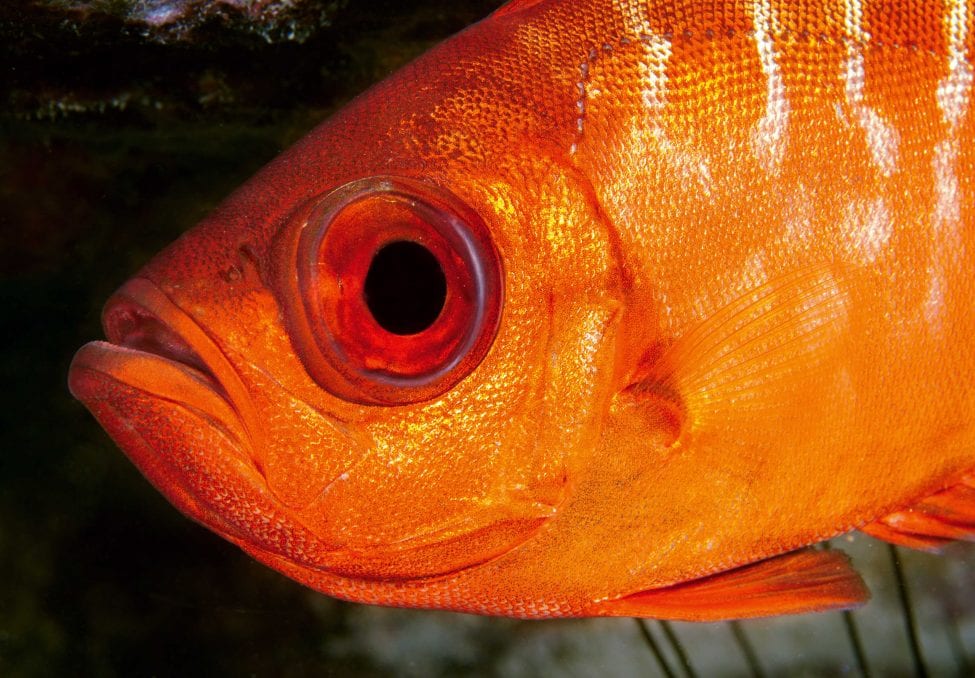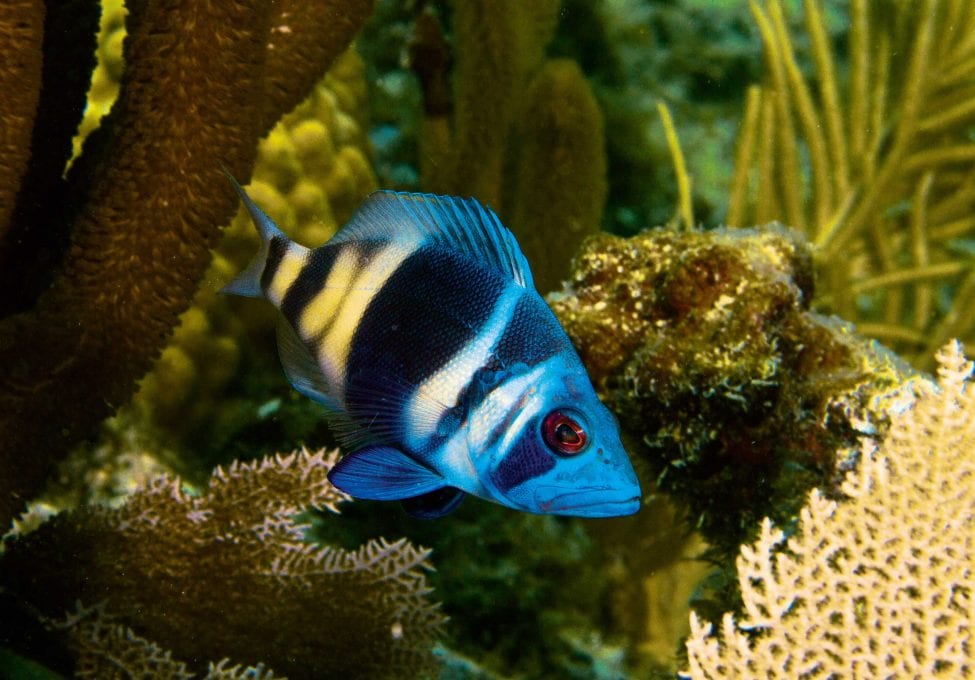Can sound science help the reefs?
Crackling, popping, barking and singing; life in the sea is anything but silent. A chorus of sound guides ocean life on the reef, helping an array of animals to find their home, new mates and food and to defend their territory. How this happens, and what it all means, is the focus of a ground-breaking project in the Caribbean. Coral Chorus is bringing new insights to light and at a time when the effects of human activities in the sea threaten to overrun the delicate orchestra at play underwater. Postdoctoral researcher Paul Caiger from Woods Hole Oceanographic Institution leads us on a sonic tour of one of the Virgin Islands, where the science of sound might just help us save reefs in the future.
Photo by Paul Caiger
Submerged 40 feet (12 metres) below the surface in warm, clear waters, one could be forgiven for expecting the only sound disturbing the tranquil setting to be the intermittent gurgling of scuba bubbles. After all, Jacques Cousteau introduced millions to the marine realm with his ground-breaking documentary The Silent World. However, the reality is anything but silent. A cacophony of sounds emanating from the diverse animals that call the ocean home, as well as from the watery environment that surrounds them, competes for acoustic space on any given reef. Marine mammals are perhaps best known for their songs, but many more animals also contribute. Fishes grunt and chatter, sea urchins graze the rocks, their bodies resonating loudly as a result, and snapping shrimps pop away pervasively with a broadband crackle. All this noise is used in communication, foraging, predator avoidance, orientation and more. Understanding the importance of sound to animals and the reef has changed the way we view – and listen to – the underwater realm, opening up a rapidly expanding field of science called bio-acoustics.
Scientists from Woods Hole Oceanographic Institution (WHOI) have set out to understand how both the reef community structure and the ocean life that it harbours are influenced by the soundscapes. They also want to know how the biophysical soundscape – that is, the sounds from the non-living elements of the ocean environment – influences the make-up of the reef. In addition, and perhaps more importantly, the goal is to discover whether a healthy reef can be distinguished from a struggling one based on its acoustic properties alone. This involves characterising the soundscapes across a gradient of reefs and then comparing the result to other factors that can help assess reef quality. These range from the diversity and abundance of corals, fishes and microbiome life that are found on each reef to the water quality, the nature of the habitat and the patterns in how different species settle on the reef. Detailed observational and monitoring techniques have also been built on by some experimental and modelling work, such as sound playback experiments and passive drifting recorders, to narrow in on specific research questions and address some of the mechanisms behind these reef and settlement patterns.

